AWARD Hall of Fame honours the creative legends
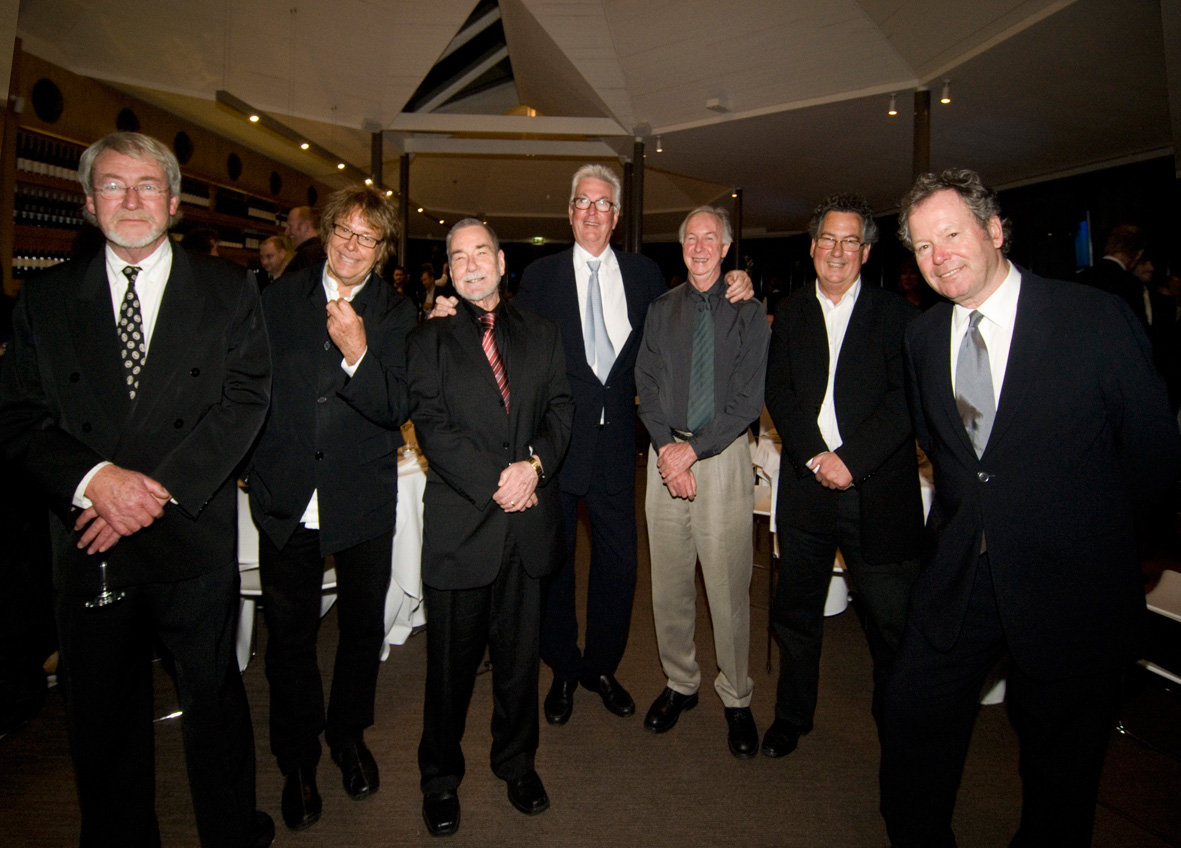
The cream of the Australian ad industry, past and present, paid tributetonight to 11 creative legends at the AWARD Hall of Fame, held inSydney.
The eleven inducteesinto the AWARD Hall Of Fame, which was sponsored by Adstream are: Jack Vaughan, Lionel Hunt, JohnBevins, David Denneen, Bob Isherwood, Allan Johnston, Ron Mather, AlanMorris, Kim Thorp, Gordon Trembath and Neil French.
VIEW THE VIDEO: Enjoy Lynchy’s special wobbly cam, audience-view, wide screen extravaganza, only possible with a Sony Cybershot camera…
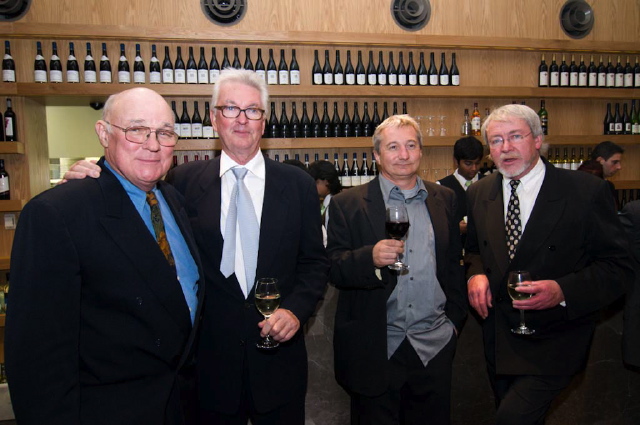
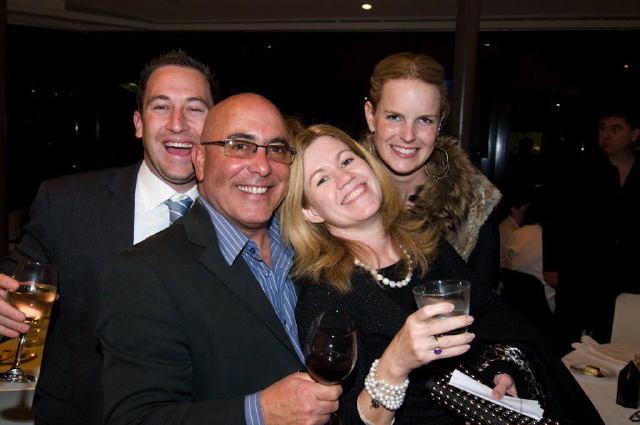
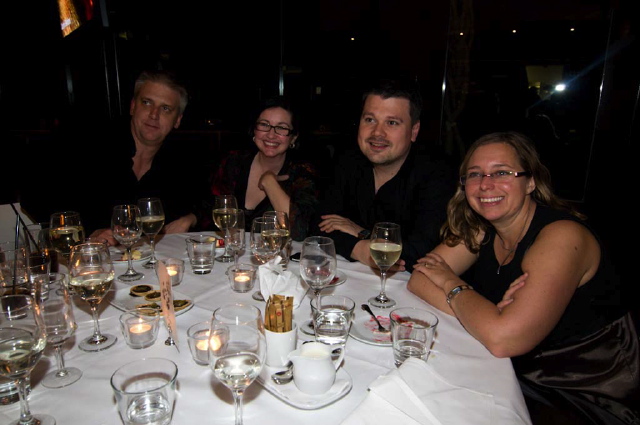
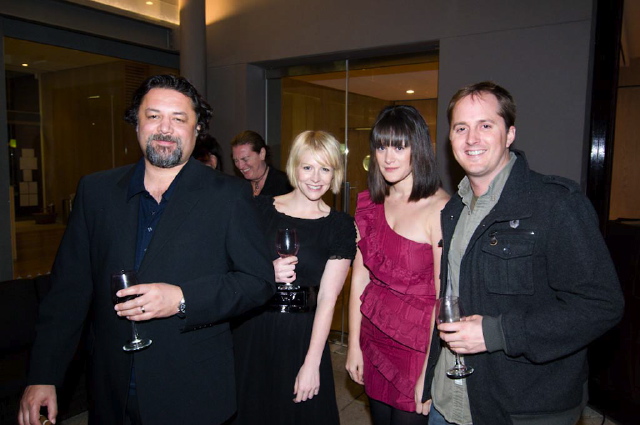
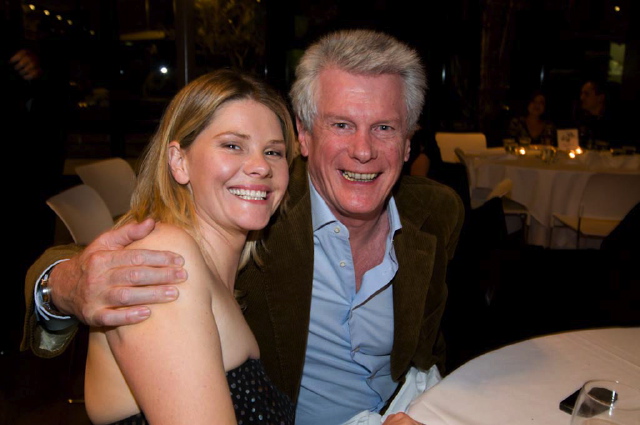
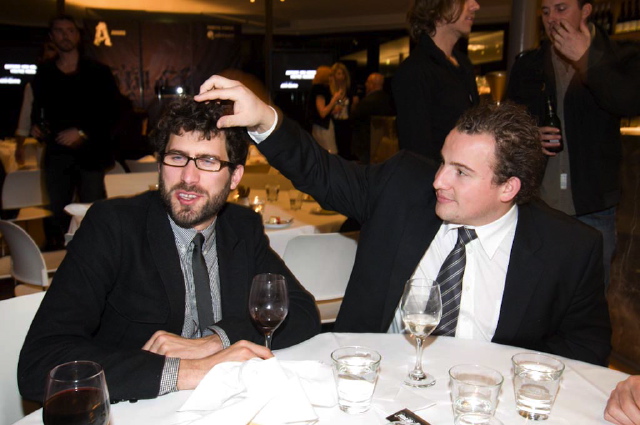
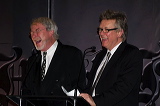
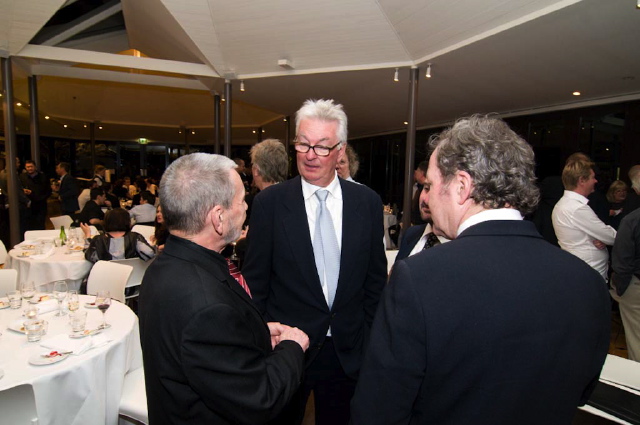
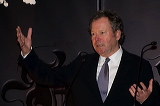
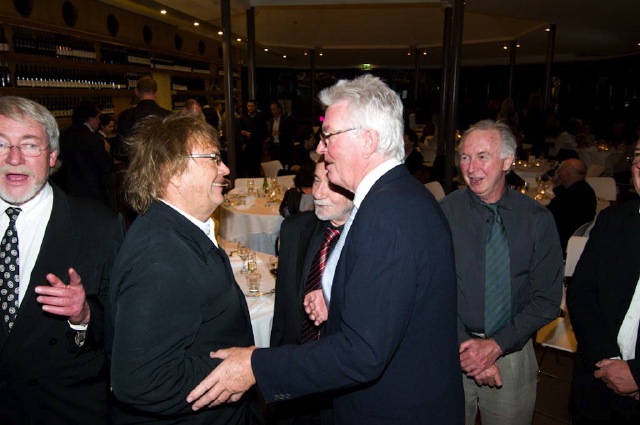
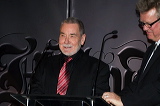
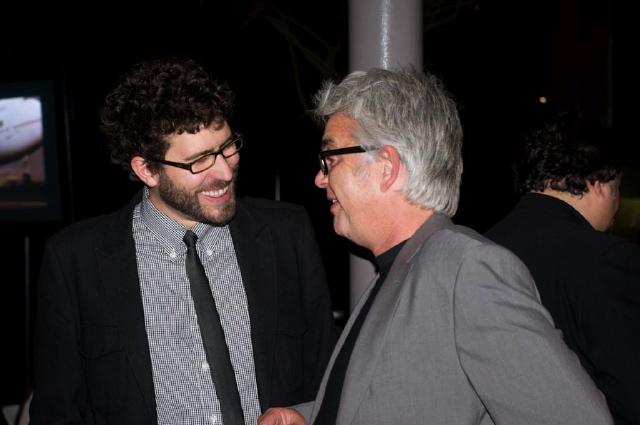
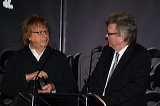

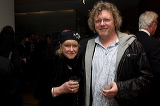
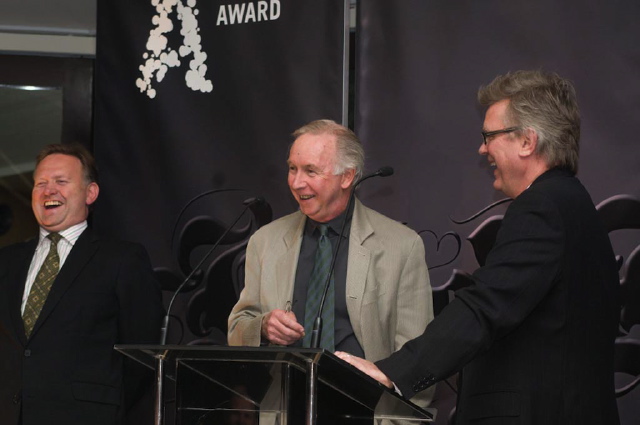 Guests were treated to a historical showcase of the inductees’advertising genius – compiled by freelance creative director Mike Boswell – throughout the night. They were presented with blackAWARD pencils and interviewed on stage by the hilarious MC FyshRutherford, creative partner at Twenty20, who flew up from Melbourne.
Guests were treated to a historical showcase of the inductees’advertising genius – compiled by freelance creative director Mike Boswell – throughout the night. They were presented with blackAWARD pencils and interviewed on stage by the hilarious MC FyshRutherford, creative partner at Twenty20, who flew up from Melbourne.
NeilFrench, Bob Isherwood and Gordon Trembath were unable to make the trip,with Gordon sending the audience a special acceptance speech. AlanMorris’ sons Asher and Ronnie collected the pencil on behalf of theirlate Father.

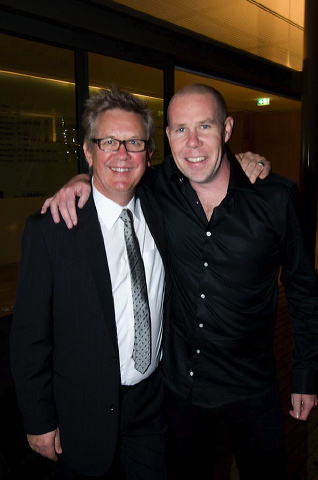 Says AWARD Chairman Richard Maddocks (bottom right pic, with Fysh Rutherford): “As anindustry we’re obsessed with the next thing. The AWARD Hall of Fameevening was about doing something long overdue and paying tribute tosome of the amazing creative careers that defined a generation ofadvertising and as a result paved the way for those of us in theindustry today.”
Says AWARD Chairman Richard Maddocks (bottom right pic, with Fysh Rutherford): “As anindustry we’re obsessed with the next thing. The AWARD Hall of Fameevening was about doing something long overdue and paying tribute tosome of the amazing creative careers that defined a generation ofadvertising and as a result paved the way for those of us in theindustry today.”
Peter Miller, Managing Director of adstreamhanded out the awards to each inductee on the night. He said; “AWARDnever stops recognising brilliant thinking which we applaud. We reckonadstream frees people to do just that, so we are jazzed to getalongside the Hall of Fame initiative.”
The Hall Of Fame selection committee comprised: MattEastwood – DDB Sydney, David Nobay -Droga5, Tom McFarlane – M&C Saatchi, Jonathan Kneebone -The GlueSociety, Warren Brown – BMF, Rob Belgiovane – BWM, Mike O’Sullivan -Saatchi & Saatchi Auckland, Richard Maddocks – Clemenger BBDOSydney, Darryn Devlin – Kastner & Partners, Michael Lynch – Campaign Brief and Michael Ritchie -Revolver.
VIEW THE VIDEO: Enjoy Lynchy’s special wobbly cam, audience-view, wide screen extravaganza, only possible with a Sony Cybershot camera…
The roll of honour (in alphabetical order):
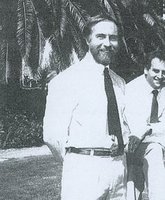 JOHN BEVINS
JOHN BEVINS
As chairman and creative director of leading Australian independentagency, John Bevins, which he founded in 1982, Bevins is renowned for,among other things, the long-copy ads he wrote for BT Funds Managementand his championing of copywriting. Born in Liverpool, England in 1946he arrived in Australia in the same year and his first job inadvertising was in 1963 as a dispatch boy at Hansen-RubensonMcCann-Erickson. He worked his way to print production, accounts, thencopy, working as a junior writer under Bryce Courtenay.
He spent the next decade at Ogilvy & Mather joining as a writer in1967 in its first year in Australia. In 1972, aged 26, he was madecreative director, a job that came with a stint at Ogilvy & MatherNew York. Bevins left in 1979 to set up creative consultancy Bevins,Slapp with the late Brian Slapp. One of their first campaigns was the’Sponge’ TVC for Quit for Life, a visual metaphor for tobacco beingwrung out of a human lung. Other
earlier work includes ‘TDK doesamazing things to my system’ and ‘Take me away please, P&O’.
In 1993 John was voted Advertising Person of the Year and CreativePerson of the Year in the Campaign Brief readers’ poll. In 2002 he wasawarded the inaugural Advertising Federation of Australia’s medallionfor services to the industry and in 2007 the Denis Everingham Award forcopywriting at the Caxtons.
“John is an amazing talent and very shy, unlike some in the businesswho have elevated their profiles by promoting themselves to loftypositions in inverse proportion to their talent,” said Ray Black, whenBevins was inducted into The Work’s 2008 Hall of Fame. Black became apartner with Bevins in the mid 1980s where they had a great time onworking with clients refereed to as OKOP – Our Kind of People. “Thereis a wonderful freedom in being able to choose the clients we respectedand wanted to work with and the work we produced to fit comfortablywith a social conscience,” said Black.
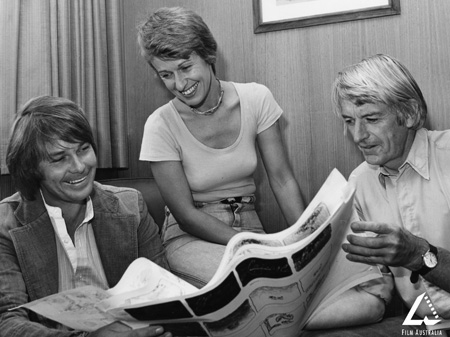 DAVID DENNEEN
DAVID DENNEEN
David Denneen, widely acknowledged as one of Australia’s topcommercials directors, has also built Filmgraphics, one of Australia’sleading production houses. “I love film making. To me, I don’t see myjob as work, it’s my hobby … and I get paid for it. How good is that!”said Denneen.
Among the work he has directed is McDonald’s ‘James Dean’, DiscoverCard’s ‘Friendly Reminder’, MLA’s ‘Gone Fishing’, Optus ‘Whalesong’ andGatorade’s ‘Heroes’. He’s worked with some of the world’s most famoustalent including Michael Jordan, Ken Griffey Jr., Shane Warne, MichaelJ Fox, Brooke Shields, Naomi Watts, Patrick rafter, Richard Gere,Jackie Chan, Sir Bob Geldolf and Dustin Hoffman.
In 2001 Denneen was among the inaugural recipients of the AustralianScreen Directors Association (ASDA) accreditation alongside GeorgeMiller, Peter Weir, Gillian Armstrong, Bruce Beresford, Ray Lawrence,Phil Noyce and Fred Schepisi. The accreditation for cinematographers,acknowledges the creation of a body of work of a consistently highstandard. His peers voted him as Director of the Decade for the 80s andagain for the 90s.
Over the years he’s won every major award in Australia andinternationally at festivals, including D&AD, Mobius, Cannes, KodakGongs, and the New York Advertising Festival. In 1977 Denneen wasanimator, co-director and co-designer on the Academy Award-winningshort Leisure (1977) and in 2006 he directed his first feature film,Restraint, a psychological thriller.
 NEIL FRENCH
NEIL FRENCH
Legendary advertising executive Neil French is considered one of thepioneers of advertising in Asia. The British native moved to Singaporein 1983 as creative director of Ogilvy & Mather. He then worked atBatey Advertising and the Ball Partnership before re-joining Ogilvy& Mather as regional creative director. He was promoted toworldwide creative director of WPP Group, a position he resigned in2005 after the furore caused by the controversial comments made duringa conference in Toronto. The comments related to female creativedirectors with French saying that “you can’t be a great creativedirector and have a baby and keep spending time off every time yourkids are ill … Everyone who doesn’t commit themselves fully to the jobis crap at it”.
His work for Chivas Regal, Kaminomoto, and ‘XO Beer’ for The StraitsTimes are among his most famous campaigns. “Not surprisingly, it tookhim tens of thousands of hours to lift the creative standards offirstly Singapore, and then the rest of Asia. Asian creativity wastruly hand-made by French,” said Jim Aitchison when French was inductedinto The Work’s 2002 Hall of Fame.
He also taught a generation of Asian creative directors, copywritersand art directors never to accept bland briefs and inept strategies,continued Aitchison.
Aitchison said: “Neil taught Asia’s smartest young account handlersnever to write them. He engrained in both groups that great work wasnever comfortable work, and vice versa. The ‘Neil French-type’ adbecame industry jargon. And not just in print and not just inSingapore. He championed the cause of Thai creativity, he cracked hiscreative whip in Hong Kong, and he scooped up all the regional awardswith customary ease. His ads were the first Asian ads to appear in theinternational annuals. Everyone’s work was the better for his presence.Everyone tried harder, either to please him, or beat him.”
French is the founder of advertising show, The World Press Awards,limited to advertising that appears solely in the print media and hebriefly served as manager of the British Heavy Metal band, Judas Priestin the 70s. At the 2009 New York Festivals Advertising Awards, Frenchwas presented with the NYF Lifetime Achievement Awards.
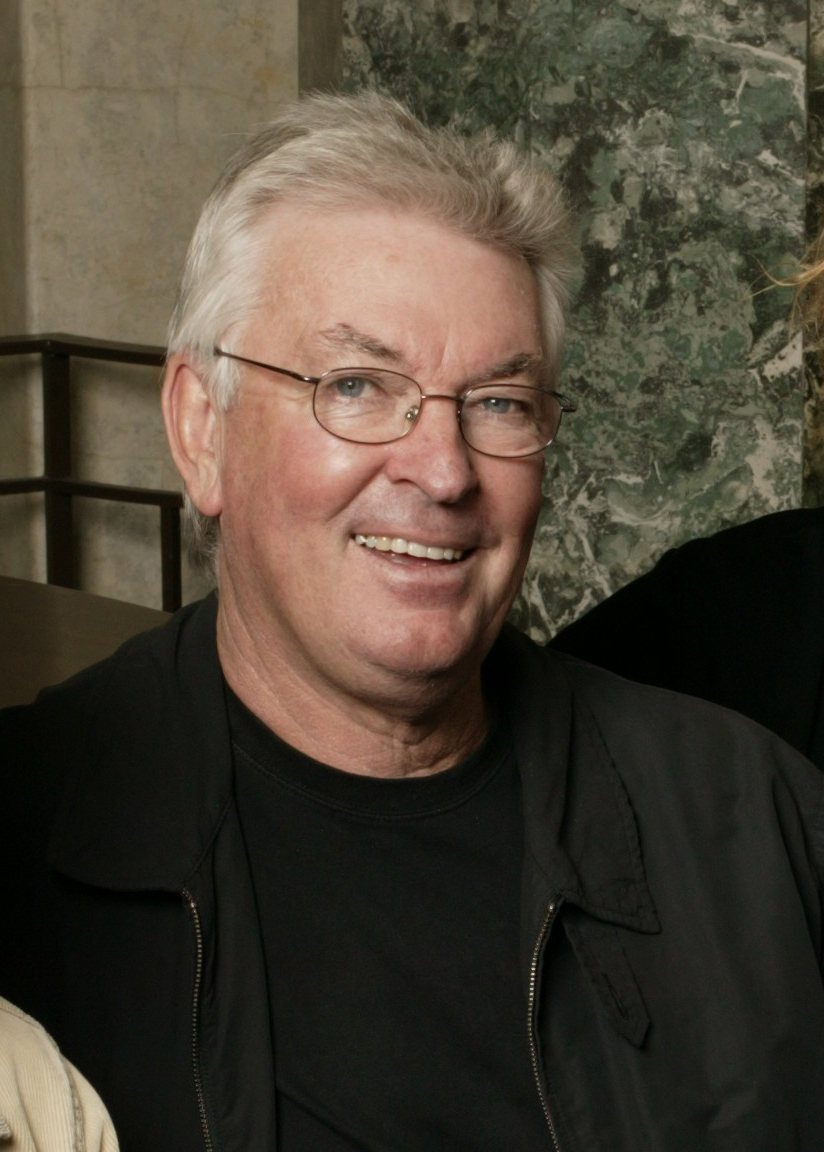 LIONEL HUNT
LIONEL HUNT
Lionel Hunt’s written some of the best Australian ads of all time andsome of the most awarded, including gold and silver at Cannes, The OneShow and AWARD. He’s been three times voted Creative Director of theYear, was elected Advertising Man of the Year in 1984 and has beeninducted into the FACTS, AWARD (re – presented tonight), Caxton andCampaign Brief Halls of Fame.
“You don’t make Halls of Fame for just writing,” said Jack Vaughan,when Hunt was inducted into The Work’s 2003 Hall of Fame. “What heought to be recognised for is much larger: For uncompromisingconviction of the power of great ads. For creating (and, even harder,sustaining) an environment in which everybody worked toward that. Forlifting everyone’s game. For changing the rules. For not beingintimidated. For being, in other words, a consummate Advertising Man.”
Hunt emigrated to Australia from his native England in 1961, firstworking as a jackaroo and then on a sewer-pipe laying gang beforejoining a Tasmanian advertising agency as a copywriter. Eleven yearslater in 1972, after jobs as account executive, advertising manager,copywriter and creative director, he joined Gordon Trembath at TheCampaign Palace, which had started six months earlier in Trembath’slounge room. The Campaign Palace became Australia’s hottest agency.Hunt was chairman and national creative director until he left in 1998to form Lowe Hunt and Partners and he resigned as chairman of the LoweLintas Group in Australasia in December 2008, aged 65.
Hunt was behind iconic Australian lines including: “One day you’regonna get caught with your pants down”; “Berlei Sports Bra. Sometimesthe only thing you want to bounce is the ball”; and “Get wrecked onGreat Keppel Island”. As he wrote in D&AD’s The Copy Book, Hunt’sphilosophy is: “Always work with a great art director. Always ta
ke himout to lunch. Be brave. Take up table tennis. Don’t sell your own work.Surround yourself with brilliant account directors. Concentrate on yourheadlines before your body copy. Don’t bury the proposition. And have alaugh.”
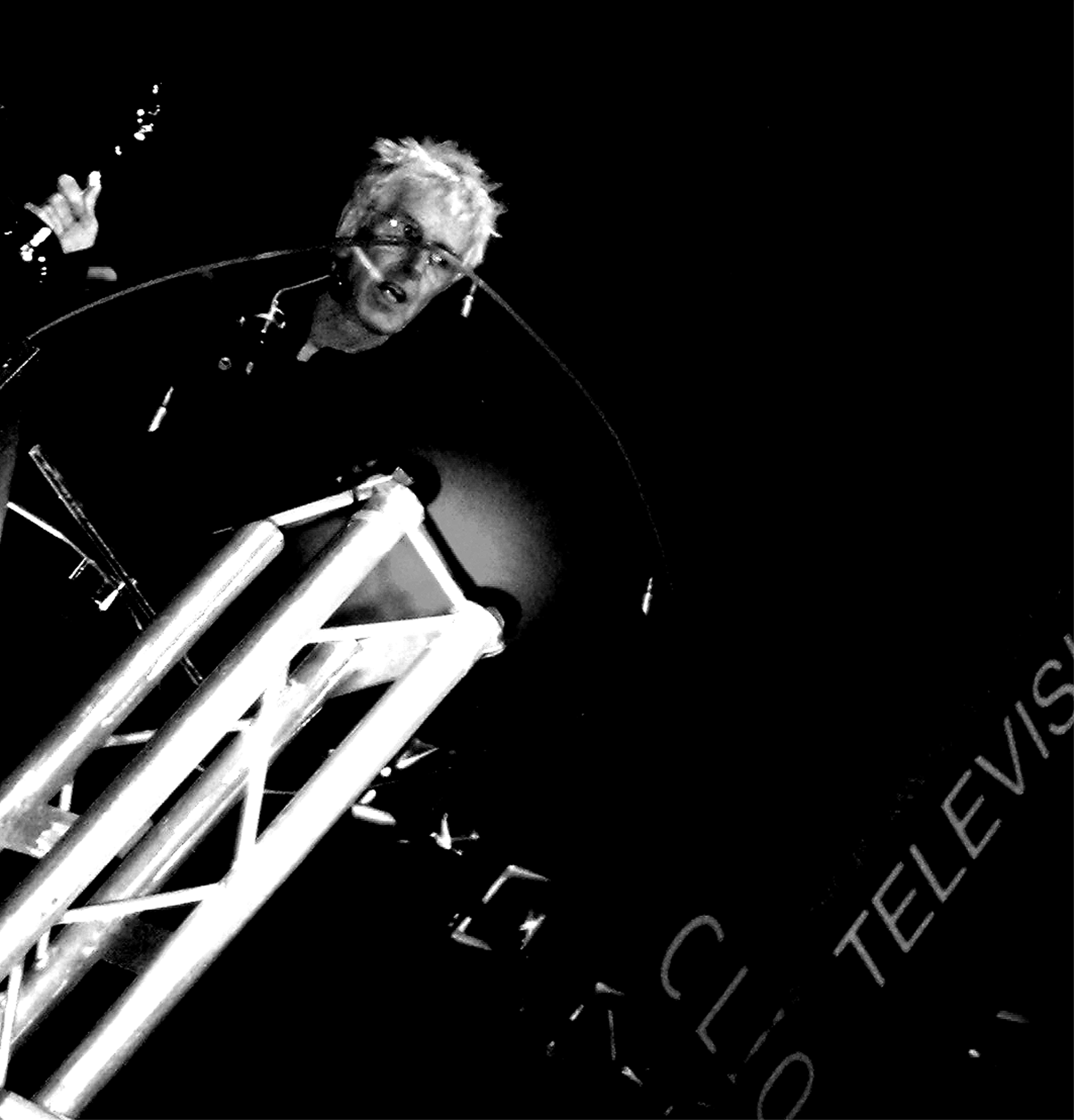 BOB ISHERWOOD
BOB ISHERWOOD
In a distinguished career in the global advertising industry, BobIsherwood can claim many firsts: he’s won Australia’s first gold Lionfor film and cinema at the Cannes International Advertising Festival,was the first Australian to win a D&AD Gold Pencil and theD&AD’s first ever Silver pencil for Typography, he’s been electedto the Clio Hall of Fame in the US and named Australia’s leadingcreative director.
Isherwood spent six years as creative group head of Young & RubicamLondon and ten years with Collett Dickenson Pearce & Partners, thengenerally regarded as the most creative advertising agency in theworld. In 1982 he returned to his native Australia as founding partnerof The Campaign Palace Sydney. In 1986 he joined Saatchi & SaatchiSydney and was appointed creative director in 1988, chairman of theWorldwide Creative Board in 1995 and worldwide creative director andmember of the executive board in 1996.
He resigned in November 2008 after 22 years with the company breakingup his long-standing partnership with worldwide CEO Kevin Roberts, aNew Zealander Isherwood first worked with when Roberts was his client.Among the work he is proudest of is his work with The Saatchi &Saatchi Award for World Changing Ideas and every year at Cannes he gavea memorable introduction to the Saatchi & Saatchi New Directors’Showcase.
Based in Miami, he retained close ties with the Australian advertisingindustry. When Isherwood was inducted into The Works’ Hall of Fame in2005, David Nobay recalled their first meeting in New York. “He hadplans for me at Saatchi & Saatchi Sydney and was busy briefing mewith all the cautious enthusiasm of a Master Architect instructing ayoung apprentice on blueprints to renovate his most treasured creation;which, in reality is exactly what the Sydney office is to Bob,” saidNobay. “At the time it struck me how intimately knowledgeable he wasabout an office on the other side of the planet, especially given itwas one of over 120 under his watch.”
 RON MATHER
RON MATHER
Lionel Hunt remembers Ron Mather walking into The Campaign PalaceMelbourne – sporting an Afro hairdo and carrying the best TV portfolioHunt had ever seen and was offered a job on the spot. Mather had beenworking with a writer called Andrew Rutherford at Saatchi & SaatchiLondon and The British native had recently arrived in Melbournefollowing his bride-to-be, Leoni, first landing a job with Masius.
Working with Hunt and Jack Vaughan, it was the first of Mather’s longstints at The Palace. “The laughs we had, the lunches we had, the adswe did. No one could put a print ad down on a page like Ron. Always bigand bold and ballsy and always so downright legible they almost readthemselves out loud to you,” said Hunt when Mather was inducted intoThe Work’s Hall of Fame in 2007.
He left the Palace to become creative director of Saatchi & SaatchiMelbourne before relocating to Saatchi’s Sydney office. One of hismost memorable campaigns during this time was Volvo’s ‘Survive theCrash’, which ran the day after the 1987 stock market crash. AfterSaatchi’s Mather directed commercials via his own company MatherGodsell before rejoining The Campaign Palace as creative director ofSydney. Famous ads from this stint are the Fuji ‘Baby’ spot and theWestpac ‘Olympics’ TV campaign with the parents of Olympians ineptlytrying to emulate their offspring. Mather then returned to Melbourne,first as executive creative director of Grey Worldwide and then aschairman of Clemenger BBDO Melbourne.
Mather left Clems in October 2006 and soon after launched The Cavalrywith Tony Greenwood. Last year Mather split from Greenwood to form It’sthe Thought that Counts, and was recently joined by Christine Barneswho he worked with at Grey and The Campaign Palace. “Ron has had one ofthe longest, most distinguished creative careers in Australianadvertising,” said Hunt. “He has won almost every major internationalaward, has twice been voted creative director of the Year by BRWMagazine, has judged at Cannes and D&AD and was the firstAustralian to be chairman of judges at the Clio Awards. The best artdirector/creative director ever to grace our shores from theMotherland? I can think of a couple of heavyweight contenders for thattitle, but, as you may have guessed, Ron gets my vote.”
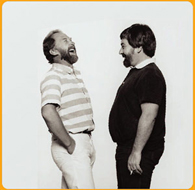 ALAN MORRIS (MO) AND ALLAN JOHNSTON (JO)
ALAN MORRIS (MO) AND ALLAN JOHNSTON (JO)
Their careers are so entwined that it is impossible to separate Mo fromJo, who together were responsible for many of Australia’s best-lovedand most effective ad campaigns. Mo, who lost a year long battle withcancer in 1997, was known to scrap and remake an entire campaign hoursbefore the meeting and returning from lunch would order all the typereset on a campaign he’d signed off only hours before. The son of CarlMorris, a founder of USP Needham, he was travelling around the Stateswhen he got a job as a copywriter in a Canadian agency. Returning toAustralia he joined Rogers Holland and Everingham before starting hisown shop as creative director of Mullins Clarke and Ralph. He gave itup to spend his mornings freelancing and his afternoons lunching inPaddington.
At the other end of the bar was Allan Johnston. He’d started out as ayoung copywriter before getting a job as an assistant producer in anAdelaide agency, where he moved into the copy department writingjingles. He was a creative group head when he got to work on a projectfor an agency called Marketing and Advertising with Morris. Togetherwith Mo’s brother Don Morris, they launched Mojo. Together they wroteseven of the best TV commercials of all times, as judged by industryleaders in a recent poll. Their ads became a hit among the Australianpublic, particularly World Series Cricket’s “C’Mon Aussie C’Mon”,Meadow Lea’s “You oughta be congratulated”, Australian TourismCommission’s spot with Paul Hogan’s instruction to “Put another shrimpon the Barbie” and Tooheys ‘How do you feel?” and “I can feel a XXXXcoming on’.
“It’s the stuff of Australian dreams,” said Doug Watson when Mo and Jomade Campaign Brief’s Hall of Fame in 2006. “A likable, local larrikin brandof advertising that’s more powerful than anything before or since. Itnever pretended to be international, although it did work overseas. Itwasn’t made for award juries, just the average punter. It’s a magicalblend of empathy, mateship, cynical humour and celebration.”
The
y hired people like Phil Gough, John Turnbull, Scott Whybin, RoddMartin, George Betsis, Rob Belgiovane, Ted Horton and Chris Dewey.
Watson said: “To their supporters, the songs weren’t merely jingles atall. They were songs with ideas, with brand names artfully woven in. Aformat so brilliantly simple, but nobody seemed to have caught on.Basically it was 40-seconds of consumer understanding with a currentlyric that seamlessly became the brand promise. The emotion would buildfrom frame one and, by the time the product arrived, it was acelebration. If you ever caught yourself singing their melodies youcould never exclude the brand.”
Then there’s the Coke incident when they were presenting a worldwideconcept to Coca-Cola in Atlanta. As Watson recalls it, the two shuffledto the stage and Jo started tuning a guitar but were interrupted byMcCann’s global creative director asking who their target audience was.”Stretching to his full five foot four, Mo said in a laconic mutter,fair to the microphone for all to hear: ‘Any cunt with a mouth’. Thepresident of Coke thought this was the most precise targeting he’dheard all day,” said Watson.
After a merger with Monaghan Dayman Adams, Mojo/MDA acquired offices inLondon, New York, San Francisco, Hong Kong, Singapore and affiliatesthroughout Asia. In 1988 Advertising Age named it as InternationalAgency of the Year.
 KIM THORP
KIM THORP
Kim Thorp was creative director of Saatchi & Saatchi Wellington for12 years and chairman of Saatchi New Zealand for two years as well asrepresenting Australasia on the agency’s worldwide creative board.
Thecreative hot shop attracted global fame for campaigns such as ToyotaHilux’s ‘Bugger’, Land Transport Safety Authority and New ZealandTelecom. In 1997, Advertising Age ranked it as one of the top 10agencies in the world.
In 2003 Thorp joined with three other Saatchi Wellington executives -Peter Cullinane, formerly COO Saatchi & Saatchi Worldwide, JamesHall, formerly chairman of Saatchi & Saatchi UK and Howard Greive,formerly head of television, Saatchi and Saatchi NZ to start theconsultancy Assignment.
In 2005 it teamed up with JWT to win Tourism New Zealand’s ‘100% PureNew Zealand’ account. Assignment was given creative control and JWTstrategic and media services. Assignment does not enter awards, has nopermanent staff and the directors do not talk about their projects ortheir clients to the media. Thorp also owns a vineyard and winery andwas awarded the Industry Excellence Award at the 2009 CAANZ AXISawards.
 GORDON TREMBATH
GORDON TREMBATH
Gordon Trembath started The Campaign Palace, one of Australia’s mostlegendary agencies, in the lounge room of his South Melbourne home withno money, but a stack of awards and the conviction that Australianeeded a creative consultancy. He’d been joint creative director ofMasius Melbourne, one of the hottest agencies of the 1960s and 1970s.
His fledgling agency soon won acclaim creating campaigns for clientsincluding Qantas, Holeproof, Sportsgirl, Great Keppel and Cheap Jeans.In CB’s Black Book, Trembath says his favourite campaigns are ‘One dayyou’re going to get caught with your pants down’ for HoleproofUnderdaks and ‘Get Wrecked on Great Keppel Island’ as well as theWrangler campaign, ‘If I can’t wear my own Wrangler shirt I’m notgoing’. The latter shows a photo of a man wearing a denim shirt tuckedover his bright orange Hare Krishna robes as the ensemble cavorts alongthe Burke Street tramlines at sunrise.
Famous for retiring at 40, he lives in Noosa and occasionally works onadvertising projects. Reg Bryson, former CEO of The Campaign Palace, told journalist Lia Timson, who compiled the AdNews Campaign Palace 30th Anniversary book back in2002:”Gordon has guts, he does stick to his principles. He’s one of thegreatest advertising practitioners but Australia never got to see muchof him because he retired so early.”
 JACK VAUGHAN
JACK VAUGHAN
Jack Vaughan has been declared Australia’s best advertising writer as well as top creative director with his work awarded at Cannes, Clio, The One Show, AWARD, Caxton and Folio. He was the first to be elected to the AWARD Hall of Fame (re presented tonight) and the ATV Hall of Fame in the late 80s and The Campaign Brief Hall of Fame in 2002.
He has served as national creative director and executive creative director of agencies including The Campaign Palace, both Sydney and Melbourne, Young & Rubicam here and in London and George Patterson Bates. He then co-founded Principals Independent Brand Counsel, offering strategic and creative services, before becoming a creative outsource, Jack Vaughan Creative Services.
“Jack Vaughan is, in my opinion, the best copywriter in Australian advertising history,” said Lionel Hunt when Vaughan was inducted into Campaign Brief’s 2002 Hall of Fame. Vaughan first came to prominence in Australia in the 70s at Y&R Adelaide when he penned ‘Hey Charger’ for Chrysler and ‘Where do you hide your Coolabah’ for wine casks. Both of these expressions entered the vernacular. In the 80s, while at The Palace in Melbourne Vaughan wrote the ‘Isaac Newton’ spot for Holeproof Computer Socks (“They fall up, not down”), one of the agency’s best ever.
“Like all Palace trainees he’s not averse to a glass of chardonnay. He loves a good time and he loves a good laugh, in fact he’s got one of the most infectious lunchtime laughs in the business,” said Hunt.

25 Comments
Congrats all.
Especially David Deneen who is a top 100% legit legend.
A real gentleman in a world of not so’s.
A great collection of legends.
John Bevins is one of the most outstanding individuals you could hope to meet both in and out of the industry. It was an honour working for the man and probably the most valuable learning experience of my career to date.
Dave Denneen is a joy to work with and is more passionate than most a third (sorry Dave) his age.
The others I can only say that I’ve enjoyed from afar what you’ve done for Advertising and that we’d be a poorer industry for your absence.
Congratulations to all.
Well done AWARD committee and organisers.
Congratulations to the inductees, all very deserving.
Great room, great night.
DD – Fucking legend. To know him is a privilege. To work with him is even more so.
I had the immense pleasure of working with John Bevins for a number of years. Watching him craft the long-copy ads for BT was inspirational. While many deride the craft of long-copy advertising, perhaps it is because a task such as this would be too daunting. And did they work? You bet they did! BT could track increases in funds right back to the ads and when they were placed… well before the whizbangery of tracking click-thrus and unique visitors. To sit with John as he stamped each version ‘drafted not crafted’ until he was finally happy with each ad was a great experience I will never forget. Well done JB – much deserved praise for such a humble man.
Having known and worked with most of these legends, I pine for that long-gone era of excellence. When the work was funny, and doing it was fun.
And now it’s time for my afternoon nap.
I had the pleasure of working for Ron and Jack and they were the best years I had in advertising.
They were both (and I’m sure, still are) Intelligent, funny, passionate, sincere, absolute professionals.
Most importantly, their willingness to share their experience and brilliance in a patient (you had to be with me!) manner, was inspiring, and I will always look up to them with some reverence.
They taught me enough about the charm of the grape that I left advertising to market wine.
Thanks on two counts guys.
they are all legends, you too Lynchy.
now, that Reg Bryson quote on Trembath wouldn’t be from my interview with him for the AdNews Campaign Palace 30th Anniversary book back in 2002, complete with spelling mistake, would it?
Crickey Lynchy, Lia’s got a point. Reg hasn’t been a Palace man for quite a while now.
Lia, the bio’s were spliced together from our own files as well as those supplied via AWARD, so can imagine some lines would have first appeared in AdNews or B&T.
That’s now credited to you, and I have corrected that spelling mistake.
Lynchy
Great idea AWARD. Well done.
Congrats to all – much deserved. Look to Phil Gough and Vic Waterhouse being inducted, along with many others like Ray Lawrence.
Ahh, the good old days, when you could walk into a client meeting wearing a T shirt that said; “The only compromise will be your own.”
Lionel Hunt & Gordon Trembath – the founders of The Campaign Palace … top line, nice type, great T shirt. Legends.
The Hellenic Republic is now officially a trendy restaurant.
I saw Fysh there the other night.
Ok, Legends, congratulations one and all … now could you please put down your drinks and tell Award how shit their web site is!!!
Ian W had perhaps the best agency T shirt ever:
‘Stewart Roache Watson have the second most satisfied clients in Kings Cross.’
By the looks or it, the Legendettes must have been too busy looking after the kids to go to a long, boozy Boys-Award lunch.
Many moons ago CB put together an Aussie team for the ‘advertising olympics’ and most of these guys were in it – years later, they still would be.
A great time for Oz advertising – better still, just a great time!
Lunch Club,
I’m sorry and don’t wish to sound misogynist, but I don’t know of any women in our local industry who have a stripe on any of these ‘lads’. Please name some names? It seems to be a common thread that every chick thinks it’s a ‘boys club’ and in reality, awarding a ‘token’ woman would seem even more insulting.
Yes please, Lunch Club. Name the female creatives who would edge out Jack Vaughan, Lionel Hunt, Dave Deneen, the Mojo’s, Isherwood, Bevins…
They just don’t exist. These people are legends.
Sarah Barclay has done very well for herself, but I doubt she’d put herself in the John Bevins/Jack Vaughan category. Emma Hill has done some great stuff, but she’s too young. Maybe in the 2020 intake.
Who else….? Come on, Lunch Club. Name all those deserving female creatives who missed out. Please.
Tnx, Lynchy. you’re all class.
Hi,
It is good idea.
Have a nice day
Bottomless
Great idea and great award, congratulations to all. I enjoyed reading bios for all winners. thanks for sharing.
Hey you lot
You forgot KAMBOURIAN and ALLEN…
not that you would remember them as they blew you lot outta the water…
kissy kissy
What about the legendary Percy “Pip” Cogger from the pioneering days in the 1930s, 40s and 50s???